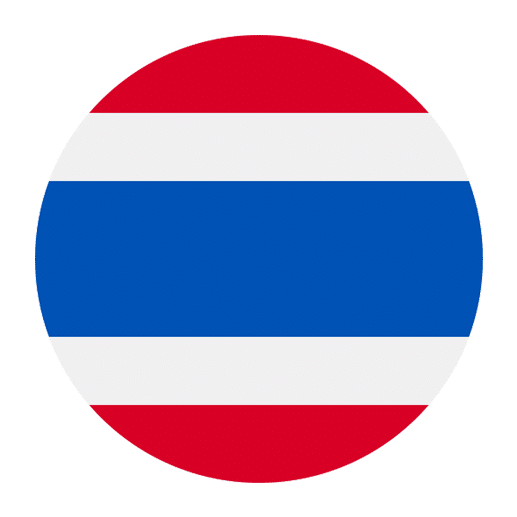Learning a new language can be both an exciting and challenging endeavor. Thai, the official language of Thailand, offers a rich linguistic landscape that is distinctly different from English in many ways. Understanding the basics of Thai grammar can greatly enhance your ability to communicate effectively and appreciate the nuances of Thai culture. This article will walk you through some of the fundamental aspects of Thai grammar, providing you with a solid foundation to build upon as you continue your language learning journey.
The Thai Alphabet and Pronunciation
Before diving into grammar, it’s crucial to get acquainted with the Thai alphabet and pronunciation. Unlike English, which uses the Latin alphabet, Thai has its own script comprising 44 consonants and 32 vowels. Additionally, Thai is a tonal language, meaning the pitch or tone used when pronouncing a word can change its meaning.
Consonants and Vowels
Thai consonants are divided into three classes: high, middle, and low, which play a role in determining the tone of a word. The vowels can appear before, after, above, or below the consonants and can be short or long, affecting the word’s meaning.
Tones
There are five tones in Thai: mid, low, falling, high, and rising. Mastering these tones is essential because a single word can have different meanings depending on the tone used. For example, the word “mai” can mean “new,” “no,” “silk,” “burn,” or “wood,” depending on the tone.
Basic Sentence Structure
Thai sentence structure is relatively straightforward compared to English. The basic word order in Thai is Subject-Verb-Object (SVO). Here’s a simple example:
– ฉัน (I) + กิน (eat) + ข้าว (rice) = ฉันกินข้าว (I eat rice).
Subjects and Pronouns
In Thai, the subject can often be omitted if it is understood from context. However, when used, Thai pronouns can indicate the speaker’s gender, status, and level of politeness. Here are some common pronouns:
– ฉัน (chan) – I (female, informal)
– ผม (phom) – I (male, polite)
– คุณ (khun) – You (polite)
Verb Usage
Thai verbs do not conjugate according to tense, person, or number as they do in English. Instead, context and additional words indicate the time of action. For example:
– ฉันกิน (chan kin) – I eat.
– ฉันกำลังกิน (chan kamlang kin) – I am eating.
– ฉันจะกิน (chan ja kin) – I will eat.
Questions and Negations
Forming Questions
To form a question in Thai, you can add the particle ไหม (mai) at the end of a statement:
– คุณกินข้าวไหม (khun kin khao mai) – Do you eat rice?
Another common way to form questions is by using question words such as:
– อะไร (arai) – What
– ที่ไหน (thi nai) – Where
– เมื่อไหร่ (muea rai) – When
– ทำไม (thammai) – Why
– อย่างไร (yang rai) – How
Negating Sentences
To negate a sentence, simply place the word ไม่ (mai) before the verb:
– ฉันไม่กินข้าว (chan mai kin khao) – I do not eat rice.
Particles and Their Functions
Thai language uses particles extensively to convey different shades of meaning, politeness, and emotion. These particles do not have direct translations in English but are crucial for natural-sounding Thai.
Politeness Particles
– ครับ (khrap) – Used by men to make a sentence polite.
– ค่ะ (kha) – Used by women to make a sentence polite.
Emphasis Particles
– นะ (na) – Adds a friendly or persuasive tone.
– จ๊ะ (ja) – Adds a sweet or affectionate tone.
Classifiers
Classifiers are an essential aspect of Thai grammar, used when counting or specifying nouns. Each noun has a corresponding classifier, and they are used in the following structure: noun + number + classifier.
For example:
– หนังสือหนึ่งเล่ม (nang sue nueng lem) – One book.
– สุนัขสองตัว (sunak song tua) – Two dogs.
Prepositions
Prepositions in Thai typically follow the noun or pronoun they refer to, unlike in English where they usually precede. Here are some common prepositions:
– ใน (nai) – In
– บน (bon) – On
– ใต้ (tai) – Under
– ข้าง (khang) – Beside
Example:
– หนังสืออยู่บนโต๊ะ (nang sue yu bon to) – The book is on the table.
Adjectives and Adverbs
In Thai, adjectives usually follow the noun they describe, and there is no need for a linking verb like “to be” in English.
Example:
– บ้านใหญ่ (baan yai) – Big house.
Adverbs, on the other hand, typically follow the verb they modify.
Example:
– เขาวิ่งเร็ว (khao wing rew) – He runs fast.
Conjunctions
Conjunctions in Thai are used to connect words, phrases, or clauses, similar to their function in English. Some common conjunctions include:
– และ (lae) – And
– หรือ (rue) – Or
– แต่ (tae) – But
– เพราะ (phro) – Because
Example:
– ฉันชอบกินข้าวและผลไม้ (chan chop kin khao lae phonlamai) – I like to eat rice and fruits.
Verb Tenses
As mentioned earlier, Thai verbs do not conjugate. Instead, time is expressed through context or additional words.
Present Tense
To indicate an action happening in the present, you can use the word กำลัง (kamlang) before the verb:
– ฉันกำลังกินข้าว (chan kamlang kin khao) – I am eating rice.
Past Tense
To indicate a past action, you can use the word แล้ว (laew) after the verb:
– ฉันกินข้าวแล้ว (chan kin khao laew) – I ate rice.
Future Tense
To indicate a future action, you can use the word จะ (ja) before the verb:
– ฉันจะกินข้าว (chan ja kin khao) – I will eat rice.
Honorifics and Titles
Thai culture places a significant emphasis on respect and social hierarchy, which is reflected in the language. Titles and honorifics are commonly used to address people appropriately.
Common Titles
– คุณ (khun) – Mr./Ms. (used for adults, polite)
– น้อง (nong) – Younger person or sibling
– พี่ (phi) – Older person or sibling
– อาจารย์ (achan) – Teacher or professor
Example:
– คุณสมชาย (Khun Somchai) – Mr. Somchai.
– พี่สาว (phi sao) – Older sister.
Common Phrases and Expressions
To wrap up, here are some common Thai phrases and expressions that incorporate the grammar rules discussed:
Greetings
– สวัสดี (sawasdee) – Hello.
– สบายดีไหม (sabai dee mai) – How are you?
– สบายดี (sabai dee) – I’m fine.
Polite Requests
– ขอ…หน่อย (kho…noi) – Please give me…
– ช่วย…หน่อย (chuay…noi) – Please help…
Expressions of Thanks
– ขอบคุณ (khob khun) – Thank you.
– ขอบคุณมาก (khob khun mak) – Thank you very much.
Goodbyes
– ลาก่อน (la gorn) – Goodbye.
– เจอกันใหม่ (jer gan mai) – See you again.
Apologies
– ขอโทษ (kho thot) – Sorry.
– ขอโทษนะ (kho thot na) – I’m sorry (more polite/friendly).
Conclusion
Understanding the basics of Thai grammar is the first step towards mastering this beautiful and complex language. While Thai grammar may seem daunting at first, breaking it down into manageable parts can make the learning process more approachable and enjoyable. Remember that practice and exposure are key to becoming proficient in any language. So, keep practicing, immerse yourself in Thai culture, and don’t hesitate to make mistakes along the way. Each step you take brings you closer to fluency and a deeper appreciation of Thai culture and communication. Happy learning!

